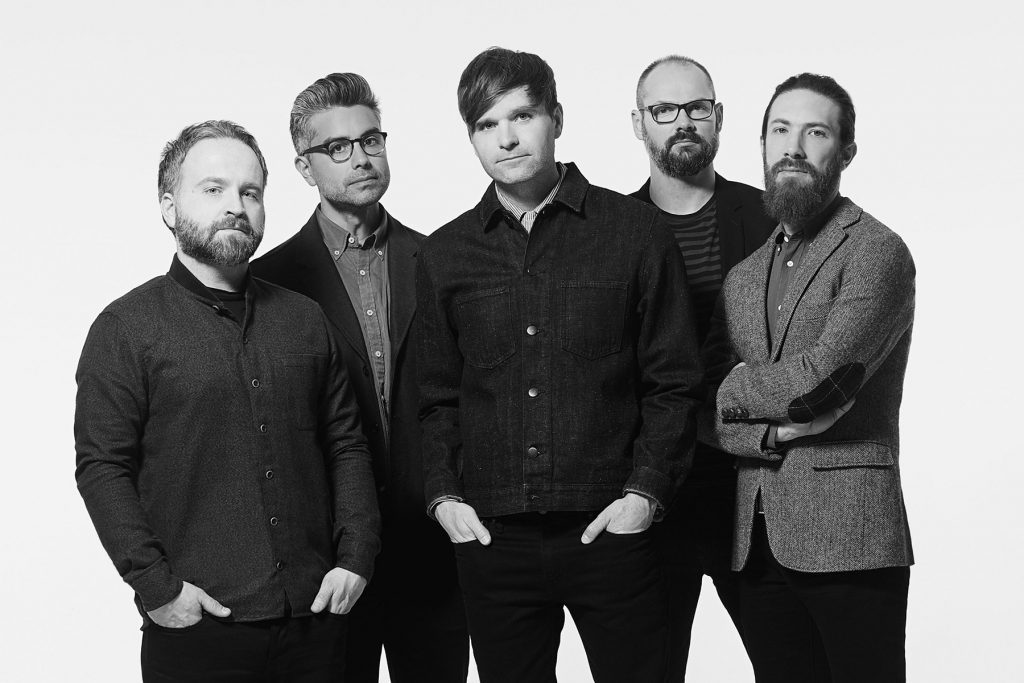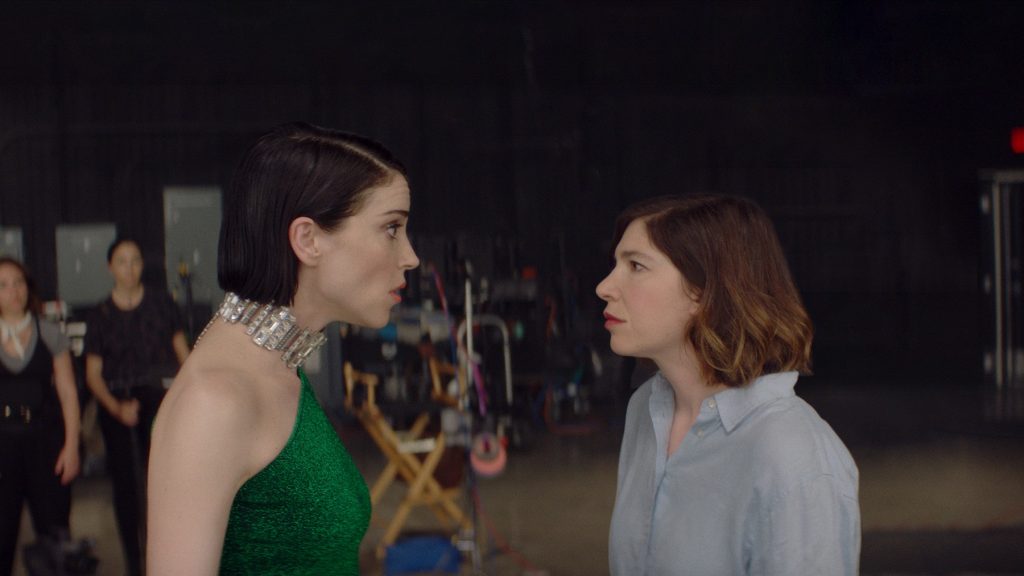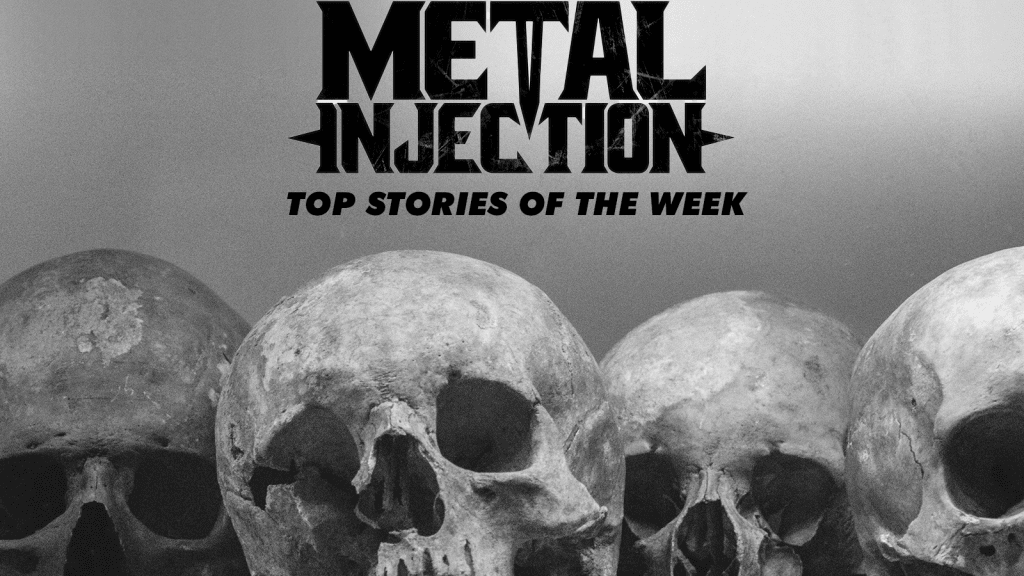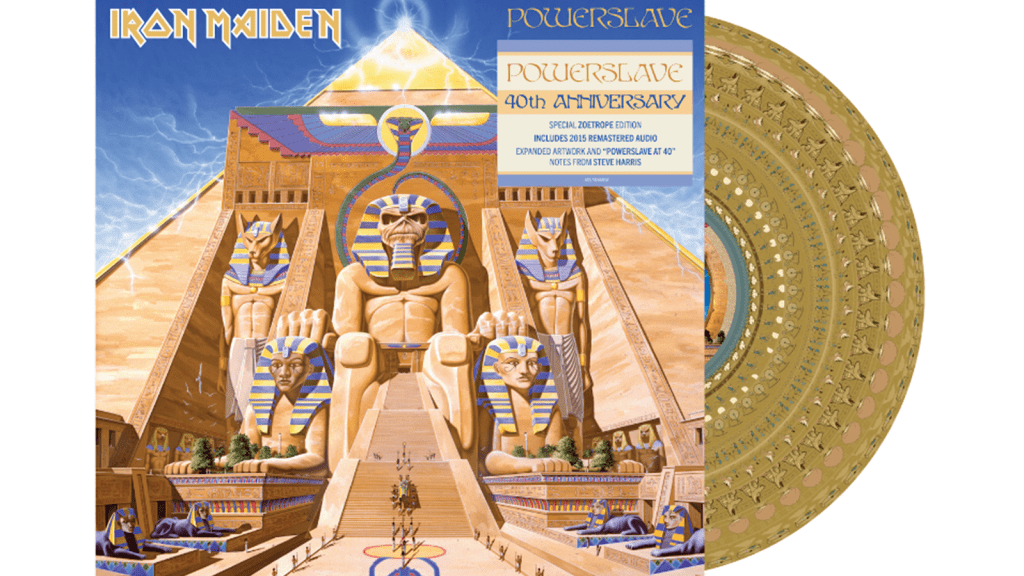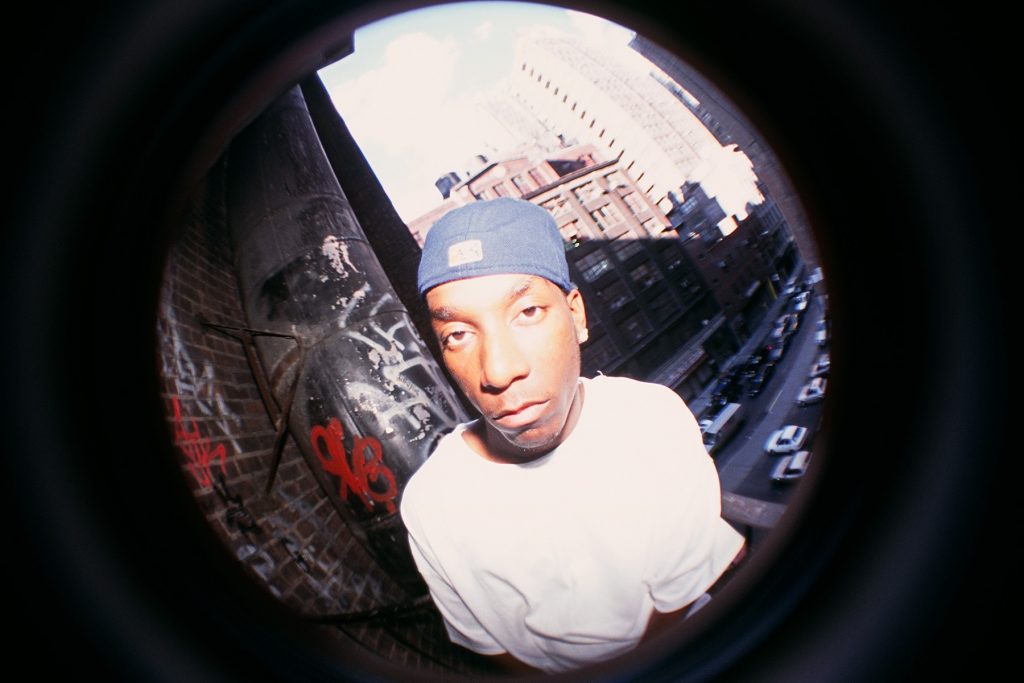
Big L Is ‘Rap Royalty.’ Why Is His Legacy in Disarray?
In 1995, a young rapper named Jay-Z appeared on The Stretch Armstrong and Bobbito Show, a radio program that served as an essential proving ground for any fledgling New York MC. The gifts that would transform Jay-Z into a million-selling megastar were already evident as he freestyled, shifting deftly between swaggering and agitated rhyme patterns. But the rapper was still unproven, hunting for a record deal on the strength of his solo debut single, “In My Lifetime.” “It’s in some stores,” he told his hosts. “Once we lock this distribution thing down, it’s gonna be in all [of them].”
Jay-Z’s suave boasts and expert bursts of speed weren’t enough to carry the night, though, as he was upstaged by the man who brought him on the show. Big L, the Harlem MC whose real name was Lamont Coleman, was tenacious and unwavering, toggling between hilarious (“I’m so ahead of my time, my parents haven’t met yet”) and horrifying (“I beat kids with lead pipes/I leave trails of dead mics”).
blogherads.adq.push(function () {
blogherads
.defineSlot( ‘medrec’, ‘gpt-dsk-tab-article-inbody1-uid0’ )
.setTargeting( ‘pos’, [“mid-article”,”mid”,”in-article1″,”mid-article1″] )
.setSubAdUnitPath(“music//article//inbody1”)
.addSize([[300,250],[620,350],[2,2],[3,3],[2,4],[4,2]])
;
});
This electrifying on-air exchange seemed to presage long, accolade-packed careers for both men. But Big L was shot and killed in Harlem just four years later with only one album to his name. Despite his lack of output and popular success — he never earned a Hot 100 hit — the MC has achieved “your favorite rapper’s favorite rapper” status in the years since his death. To Nineties hip-hop fans who love memorizing potent couplets, it’s not uncommon to hear Big L mentioned as one of the best rappers to ever touch a microphone.
Paradoxically, as Big L’s legend has grown, his commercial footprint has eroded. Since his death, his recordings and belongings have been sold off, seemingly for less than their worth. As a result, little income has come to the rapper’s estate recently, placing it in the middle of contentious debates about what constitutes ethical business in the music industry and who has the right to benefit from an artist’s work.
Mike Herard, who now oversees Big L’s estate, points out that the rapper “has nieces, nephews [and] a brother.” But out of “all the earnings” Big L has generated, until recently, “not a dime of it is going to his family.”
Big L wasn’t old enough to vote when he sought out rapper-producer Lord Finesse, who had just released his debut album, at a Harlem record store in 1990. Finesse was signing autographs, and Big L wanted to audition for him on the spot. “I gave him a hard time at first,” Finesse remembers. “But he finally got to rap for me.”
Even then, the rookie rapper was making heads swivel with his nasal, flinty delivery and steady drip of punchlines. “I was so impressed when he was done [auditioning for me], I was asking him for all his numbers,” Finesse says. Finesse also introduced Big L to members of the D.I.T.C. crew, a group of New York rappers and producers that included Fat Joe and Diamond D.
Big L left an indelible impression on many of the people he met in the hip-hop community in the 1990s. “We had a chance to hear him really early on,” says Bobbito, who first had Big L on his show in 1992. “He was a teenager without a contract, and he’s already rhyming as fiercely and hungrily as anyone else we could think of.” At a time when the five boroughs were teeming with future hip-hop stars, Bobbito adds, “that’s saying a lot.”
Rich King, who worked in hip-hop distribution and later helped Big L start Flamboyant Entertainment, met the D.I.T.C. crew when he put out their “Day One” single in 1997. “They were getting older [and] more into production,” King remembers. “L ripped it [and] clearly distinguished himself as the rising star.”
In 1998, that rising star released the popular 12-inch single “Ebonics,” enveloping him in a new wave of hype; he seemed on the cusp of earning the mainstream recognition that had eluded him previously. Then in February 1999, Big L was murdered in Harlem on the corner of 139th Street and Lenox Avenue. Though the police arrested a suspect, the case was later thrown out and it remains unsolved.
blogherads.adq.push(function () {
blogherads
.defineSlot( ‘medrec’, ‘gpt-dsk-tab-article-inbody2-uid1’ )
.setTargeting( ‘pos’, [“mid-article2″,”mid”,”in-article2″,”mid-article”] )
.setSubAdUnitPath(“music//article//inbody2”)
.addSize([[300,250],[300,251],[620,350],[2,4],[4,2],[3,3]])
;
});
Following his death, Big L’s wildly successful peers have not been shy about paying tribute to his work, leaving fans to wonder what might have been. Jay-Z complimented him, calling him “a very talented writer” with a knack for “big choruses”; after hearing him, Nas remembered thinking, “He scared me to death.” Eminem, one of the most commercially successful rappers of all time, also holds him in high regard: “Take some Big and some Pac and you mix them up in a pot/Sprinkle a little Big L on top, and what the fuck do you got?” he asked in 50 Cent’s “Patiently Waiting.” “You got the realest and illest killers tied up in a knot.”
In 2000, Mike “Heron” Herard was hired for his first job in the music industry, working at Rawkus Records, a prominent name in the independent hip-hop scene thanks to releases like Mos Def and Talib Kweli Are Black Star. Rawkus had licensed Big L’s tapes in the hopes of putting together a posthumous collection, and the then-25-year-old was soon talking with Tupac Shakur’s mom to clear the verse that would appear on the track “Deadly Combination” and working alongside King to assemble a Big L album.
That release, The Big Picture, became the rapper’s most successful commercial work, eventually selling more than 500,000 units. While Herard has held down multiple industry jobs in subsequent years, he stayed in touch with many of the people from the Rawkus days and eventually became friendly with Big L’s brother, Donald Phinazee. Herard, who describes the rapper as hip-hop “royalty,” “didn’t think his legacy was being handled properly.” Spurred by a sense of duty — “I really do believe that Big L deserves to be mentioned in history amongst the greatest whoever did it” — Herard officially agreed to start working on behalf of the rapper’s brother, trying to organize and revive an estate at low ebb.
Herard found everything in disarray. Big L’s debut, Lifestylez ov da Poor & Dangerous, came out on Columbia, and like so many major-label releases, it is still owned by its parent company, Sony. As of 2020, the rapper’s estate had never received a royalty from the label.
This is not an uncommon situation in the music industry. Label accounting practices are famously opaque, requiring artists and producers to badger the companies and even audit or sue them to determine if they have recouped their advance, at which point they may be able to start collecting royalties. “The mystique of the music business is that, though profits are huge, accounting is incomprehensible,” wrote Walter Yetnikoff, former president of CBS Records, in his autobiography Howling at the Moon.
blogherads.adq.push(function () {
blogherads
.defineSlot( ‘medrec’, ‘gpt-dsk-tab-inbodyX-uid2’ )
.setTargeting( ‘pos’, [“mid”,”mid-articleX”,”in-articleX”,”mid-article”] )
.setSubAdUnitPath(“music//article//inbodyX”)
.addSize([[300,250],[300,251],[3,3],[620,350]])
.setLazyLoadMultiplier(2)
;
});
This system can create a jarring dissonance when it is revealed that veteran hitmakers are, in fact, barely getting by. Recently, Black Rob, who sold more than a million copies of his Life Story album and blanketed rap radio with the 2000 single “Whoa” (produced by D.I.T.C. member Buckwild), admitted that he was effectively homeless, with his friends setting up a GoFundMe campaign to cover his medical bills. That effort failed to achieve its goal of raising $50,000; Black Rob died on April 17th at age 52.

Nas and Big L in 1994
Al Pereira/Getty Images
Lifestylez ov da Poor & Dangerous at least has the potential to earn royalties for Big L’s estate. The same cannot be said of the rapper’s other albums. After his mother, Gilda Terry, died in 2008, Phinazee took control of the estate, and nine years later, he sold The Danger Zone — another posthumous collection — and The Big Picture to RBC Records, led by Brian Shafton, for a mere $20,000. For the sake of comparison, King estimates that the initial recording expenses for The Big Picture alone were around $250,000, though he says marketing and promotion likely pushed costs past the $1 million mark.
Phinazee now claims that sale was made while he wasn’t in the condition to make business deals. “I was in the hospital with two hernias; I needed [money] for the bill,” he tells IndieLand. He admits he didn’t read the full contract, and he didn’t have the resources to find legal counsel to review the deal. (Phinazee did initial each page of the contract he signed in 2017.) Complicating matters further, Lord Finesse alleges that some of the music that changed hands in this deal didn’t belong to Phinazee — a few songs were actually the property of D.I.T.C.
A few months later, after Shafton purchased two of Big L’s albums, he also bought a slew of the rapper’s old rhyme books for $14,500. Phinazee claims that Shafton said he would put the items in a “rap hall of fame.” The purchase agreement also contained a clause indicating that Shafton now owned the rights to “the compositions” contained in those rhyme books. Phinazee says he wasn’t aware that he was selling off parts of his brother’s songwriting.
Shafton “took advantage of Donald,” Finesse claims. “Donald don’t know the business how we know the business.” Phinazee, who lives about an hour outside of New York City, currently drives a paper route seven nights a week.
blogherads.adq.push(function () {
blogherads
.defineSlot( ‘medrec’, ‘gpt-dsk-tab-inbodyX-uid3’ )
.setTargeting( ‘pos’, [“mid”,”mid-articleX”,”in-articleX”,”mid-article”] )
.setSubAdUnitPath(“music//article//inbodyX”)
.addSize([[300,250],[300,251],[3,3],[620,350]])
.setLazyLoadMultiplier(2)
;
});
Big L never had a cozy relationship with the corporate music industry. After the young rapper wowed Finesse, he joined him on the “Yes You May” remix, rapping circles around the lazy bass line. He also appeared on Showbiz and A.G.’s “Represent,” bristling like the buzzing, fire-alarm beat, and released his own “Devil’s Son,” a grisly catalog of murder and mayhem. But it took the MC a while to put out a debut album, presaging his brief and uneven relationship with the major-label system.
He eventually signed with Columbia and released Lifestylez ov da Poor & Dangerous, a blend of the spine-chilling stories exhibited in earlier tracks like “Devil’s Son” with the more commercial approach favored by massive record companies. Despite this effort, many in Big L’s circle felt that he never got a proper push from Columbia, which dropped him after only one album.
Undeterred, he struck out as an independent rapper, founding Flamboyant Entertainment with Rich King. He found cult success with 1998’s “Ebonics,” a single somehow both pedantic and crushing — he defines a slew of slang terms over a brassy, thunderous beat. “We probably sold 25,000 to 30,000 copies of ‘Ebonics’ in the first couple months,” King says. “That was huge for an independent vinyl record.”
The Flamboyant co-founders took a meeting with Jay-Z’s Roc-A-Fella Records to discuss the possibility of working together. “We were about to sign him,” Jay-Z said in 2010. This could have resulted in a fruitful partnership: Roc-A-Fella was soon to go on an airwave-ruling run that would transform Jay-Z into a global juggernaut and mint hits for labelmates like Cam’ron (who also appeared in a group with Big L called Children of the Corn). “But there was never any paperwork signed,” King says. “He got killed before any of that happened.”
King believes the rapper’s fans should avoid streaming The Big Picture and The Danger Zone since “no one involved with Big L is getting any royalties from that.” And Phinazee claims that when Shafton acquired those two albums, he “caught me at a messed-up time.”
But in an email, Shafton counters that “Donald solicited me to do business.” He adds that “all of these claims and slander on my name just seem like a smokescreen for the issues he caused with the D.I.T.C. crew.”
According to Shafton, his label RBC’s business model was mostly built around licensing albums — he initially licensed The Danger Zone from Phinazee in 2011 — rather than buying them outright. “I explained this to Donald,” Shafton claims in an email, “but he was insistent on me purchasing the masters from him” in 2017. Phinazee also signed documentation asserting that all the songs on The Danger Zone were his to sell, even though some really belonged to Lord Finesse.
blogherads.adq.push(function () {
blogherads
.defineSlot( ‘medrec’, ‘gpt-dsk-tab-inbodyX-uid4’ )
.setTargeting( ‘pos’, [“mid”,”mid-articleX”,”in-articleX”,”mid-article”] )
.setSubAdUnitPath(“music//article//inbodyX”)
.addSize([[300,250],[300,251],[3,3],[620,350]])
.setLazyLoadMultiplier(2)
;
});
Then, there are the rhyme books: Phinazee emailed Shafton in 2017 to say, “I want to sell them to you,” initially asking for $15,000. He later told Shafton that he was hospitalized, but invited the executive to go to his house and video chat with him while looking for the rhyme books, according to emails obtained by IndieLand.
Phinazee subsequently expressed concern about the deal over email: “I don’t like none of this contract; I don’t want to sign it,” he wrote. “You said [you] was putting the books in the hall of fame, it sound like u want to do something else with them.” But after some back and forth, he ultimately signed the deal a month later.
Shafton acknowledges telling Phinazee he “would try to” get the rhyme books into an institution, which has yet to occur. But he maintains that “I did do my best,” pointing to 2018 emails reviewed by IndieLand asking an intermediary to approach the Grammy Museum about Big L’s work.
As for the songwriting agreement included in the rhyme-book deal, Shafton says that was for a tribute album based on the contents of the books, which, to date, has not been made. Shafton adds that “RBC has not collected, claimed, or registered any publishing on ‘Ebonics’ or any other [Big L] song.”
“I was really surprised that Donald had all these negative things to say about me,” Shafton tells IndieLand, pointing to the fact that they did several deals together over the course of seven years. “Why would he continue to come back?”

Big L in 1995
Raymond Boyd/Getty Images
Mike Herard has an extremely low tolerance for bullshit, a rich, movie-villain laugh, and a seeming readiness to lock horns with anyone on a moment’s notice — making him a good choice for leading the hard slog of rebuilding an estate. “He’s the perfect person to do it,” King says.
blogherads.adq.push(function () {
blogherads
.defineSlot( ‘medrec’, ‘gpt-dsk-tab-inbodyX-uid5’ )
.setTargeting( ‘pos’, [“mid”,”mid-articleX”,”in-articleX”,”mid-article”] )
.setSubAdUnitPath(“music//article//inbodyX”)
.addSize([[300,250],[300,251],[3,3],[620,350]])
.setLazyLoadMultiplier(2)
;
});
And Herard has achieved some victories. He extracted Big L’s publishing from a company that was failing to look after it properly, and the estate has now secured a different partner to oversee those rights. Sony also paid its first ever royalty to the rapper’s estate last year.
To get it, Herard had to go through D.I.T.C. producer Showbiz, who played a key role in Big L’s deal with Columbia. Herard says Sony told him royalties hadn’t been forthcoming because the label “couldn’t find” Showbiz. (Sony declined to comment.) Once the “Represent” rapper started inquiring about the state of the accounts for Lifestylez ov da Poor & Dangerous, the label issued its first royalty check, according to Herard, some of which filtered to Phinazee.
But the loss of the rapper’s masters and rhyme books still stings. Herard has attempted to buy back both The Big Picture and the rhyme books with his own money. RBC declined to sell The Big Picture and Shafton asked for $250,000 to return the same books that Phinazee sold for $14,500 a few years before. (“That [$250,000] quote was more of a knee-jerk reaction to what I perceived to be a ridiculous offer,” Shafton says.) In 2018, BMG — a publishing- and label-services company that generates hundreds of millions of dollars in annual revenue — acquired RBC, including Big L’s albums. As a result, Shafton is no longer making royalties from the rapper’s music.
Ultimately, since Phinazee signed the various buyout agreements in 2017, he has little recourse for getting back his brother’s possessions. And parts of his experience are applicable to the music industry at large — even as artists call for better treatment, decades’ worth of deals have already been set down in lengthy contracts. “[Phinazee] signed away the rights to the second album in perpetuity with no royalties,” Herard says. “This is what happened in the 1930s, 1940s, 1950s, 1960s, 1970s, 1980s.”
Perhaps this is part of why the rapper’s mother, Gilda Terry, once advised Phinazee to stay away from the music industry. “It’s a bunch of bullshit, and she didn’t want me to go through it,” he says. But with Big L and Terry dead, Phinazee felt he didn’t have much of a choice. “There’s only me left,” he says.
While Big L’s albums remain in the hands of corporations, a small drop in the ocean of music catalogs they own, Herard is looking for other opportunities to build the rapper’s profile — and his revenue stream. These include a long-gestating documentary about the MC and a new merchandise line.
As Herard continues this effort, one experience from working on The Big Picture sticks with him. He remembers Fat Joe, the Bronx hip-hop stalwart and Diggin’ in the Crates member, taking his roughly $15,000 fee for his verse on “The Enemy” and sending the entire amount to Big L’s mother. (King says the legendary producer DJ Premier did the same thing.) “I’ve been in the music business for 20 years,” Herard notes, “and that’s one of maybe three times I’ve seen something selfless.”
blogherads.adq.push(function () {
blogherads
.defineSlot( ‘medrec’, ‘gpt-dsk-tab-inbodyX-uid6’ )
.setTargeting( ‘pos’, [“mid”,”mid-articleX”,”in-articleX”,”mid-article”] )
.setSubAdUnitPath(“music//article//inbodyX”)
.addSize([[300,250],[300,251],[3,3],[620,350]])
.setLazyLoadMultiplier(2)
;
});
He’s hoping that he can carry on that tradition. “I’d be satisfied,” Herard adds, “with Big L’s family [able] to look at his legacy proudly.”
